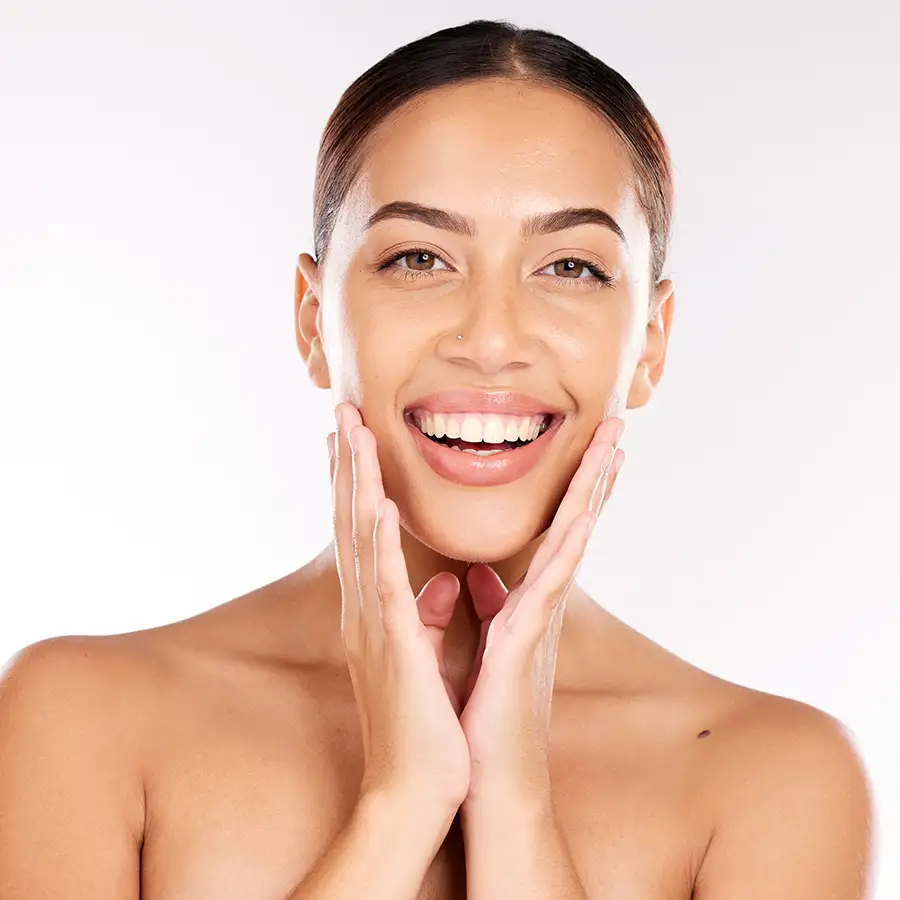Take our hormone questionnaire
If you’re experiencing any symptoms, complete our short quiz.
Or get in touch now!
Head straight to our contact page and complete our form there. Our team will be in touch right away.
Your skin has to cope with so much. Sun damage. Pollutants. Acne. The overall wear and tear of aging and time.
But you can turn back the clock. You can push back against all the forces trying to damage your skin. The magic of a chemical peel can restore luster and smoothness to your skin.


Chemical peels are versatile procedures that can help improve skin that’s been damaged in many ways. You might opt for a chemical peel to deal with any of the following:
Chemical peels can help improve your skin in all sorts of ways. They work well with all types of skin and have few side effects. You can experience brighter, fresher skin in less than a couple of weeks, and you can undergo them year-round. They’re especially helpful for those with acne, as they can help control the secretions that cause blemishes.
Chemicals used most often in chemical peels are alpha hydroxy, or glycolic acid; beta hydroxy, or salicylic acid; and TCA, or trichloroacetic acid. Glycolic acid, which is often derived from fruits or sugars, produces a lighter peel that results in flaking skin that might not even be obvious while it’s occurring. Alpha hydroxy acids are a great choice for sun damaged skin as well as fine wrinkles and minor brown spots.
Salicylic acid, or beta hydroxy acid, is a great choice for acne and acne scars. It penetrates pores beautifully, so it does a good job at unclogging them.
Trichloroacetic acid can be used for medium-depth and deep peels, and it’s also the chemical of choice for people with darker skin. It treats blemishes, pigmentation issues, and wrinkles, and it can be combined with an alpha hydroxy peel for even better results.

Chemical peels are classified based on how much skin they peel away. Depending on the condition you’re trying to treat, you might choose between a superficial, or “lunchtime,” peel, a medium peel, or a deep peel.
A superficial peel is often known as a “lunchtime” peel because you can receive the treatment easily within the limits of a standard lunch hour. This peel typically uses alpha hydroxy acid to exfoliate the skin, removing discolored areas and helping the skin look refreshed.
A medium peel goes a little deeper into the skin, using glycolic acid or trichloroacetic acid to get rid of age spots, freckles, and other discolorations. It also treats wrinkles and fine lines, creating a smooth look, and some medical practitioners use it to treat actinic keratoses and other precancerous growths on the skin.
These peels use trichloroacetic acid or phenol to penetrate deeper into the skin, removing damaged skin cells that show up as age spots, freckles, and some scars. It also removes deeper wrinkles than a lunchtime or medium peel, resulting in a dramatic change in the look of your skin.
When you show up for your chemical peel, your medical professionals will start out by cleaning your skin thoroughly. Anesthetics may be used for deeper peels. When they apply the acid solution, you may feel some slight stinging. After the peel, in some cases, your skin may be covered with petroleum jelly or another ointment to protect the skin. You’ll also receive ice packs or other cool compresses to help with the sensation of heat.
After the peel, you can expect some swelling and red skin. You’re likely to develop some scabbing, flaking, or crusting, which will last anywhere from a few days to a bit over a week, depending on the strength of the peel you had. Your skin should also feel tight as the fresh, new skin takes the place of the old, damaged skin.
While you’re recovering from the peel, you should avoid all exposure to the sun. You should also avoid smoking. You’ll have to keep your skin moisturized to help it heal.
Your skin will be red after a lunchtime peel, and it’s likely to be flaky for up to a week. You will see healing begin after a day or so, and skin should be fully healed within a week. You should apply lotion during healing, as well as sunscreen. Most people can start wearing makeup the day after a lunchtime peel. These superficial peels may need to be repeated to get the results you want; you can do a second lunchtime peel within a few weeks.
Again, you can expect to experience swelling and red skin during the first couple of days, as well as crusty skin and possibly some blisters. Your skin should peel off within 14 days and possibly as quickly as 1 week. Plan to soak your skin daily and to apply ointments and lotions. You may have to take antivirals, and you should of course avoid any exposure to the sun. You can start wearing makeup within 5 days; some people choose to stay home during this time. Plan on a follow-up appointment.
A deep peel requires a little more healing time than lighter peels. Your skin will be bandaged initially, and you’ll have to soak it about six times a day, as well as applying ointment and taking antiviral medications for 2 weeks. You can expect to require 2 to 3 weeks for healing — but you’ll have to avoid the sun for at least 3 months. You can start wearing makeup after 2 weeks, and you should expect multiple follow-up appointments as your skin heals.
You’ll be amazed at the results you see after your skin has healed. Your skin will look younger and fresher, with discolorations, age spots, and fine lines gone. Over time, new sun damage can occur, of course.
You can expect the results of a single lunchtime peel to last for a couple of months (that’s why most people have regular lunchtime peels). A medium peel will last for 6 months easily. And the results from a deep peel can last up to 10 years or even longer.
If you’re experiencing any symptoms, complete our short quiz.
Head straight to our contact page and complete our form there. Our team will be in touch right away.